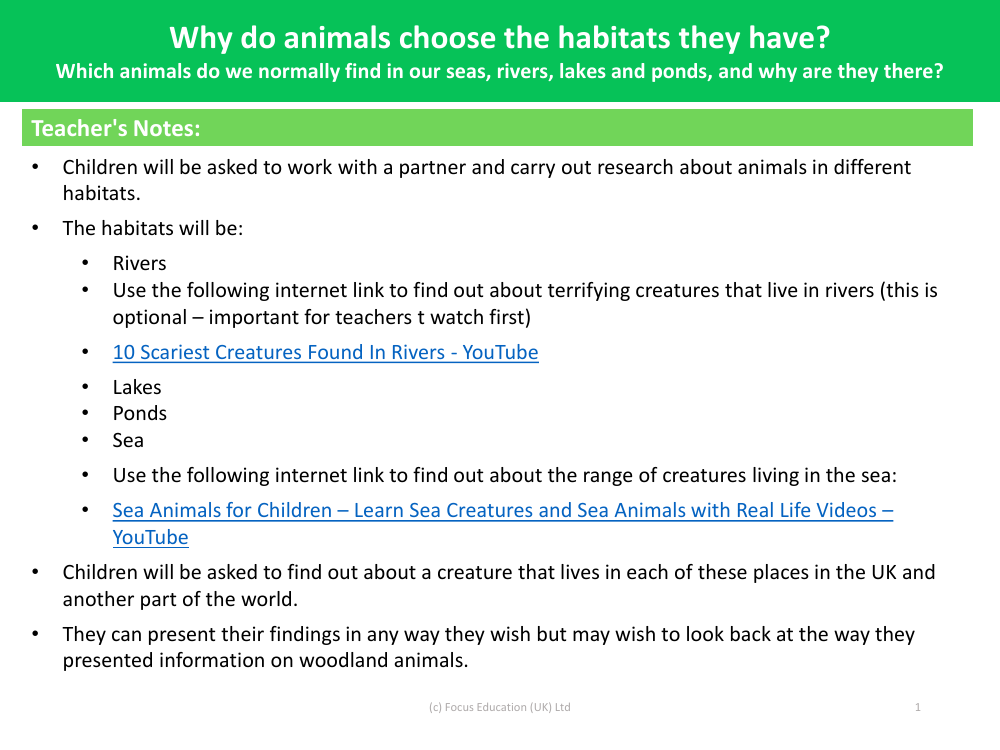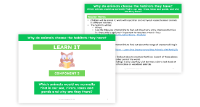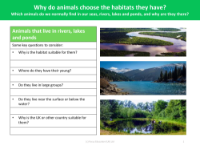Which animals would we normally find in our sea, rivers, lakes and ponds and why are they there? - Teacher notes

Science Resource Description
In the UK, our seas, rivers, lakes, and ponds are teeming with a diverse range of animals, each adapted to their specific aquatic habitat. The sea, with its vast expanse and varying conditions, is home to marine life such as fish, crustaceans, and cetaceans like dolphins and whales. These creatures are attracted to the sea due to the abundance of food, the space to roam, and the complex ecosystems that provide various niches for different species. Rivers can host a variety of species, from small insects and amphibians to larger fish like salmon and trout, which often use these waterways for migration and spawning. The presence of strong currents and a supply of oxygen-rich water are key factors that make rivers a suitable habitat.
Lakes and ponds, often more tranquil and stable environments, support life that includes waterfowl, freshwater fish, and a range of invertebrates. In these habitats, the slower water movement allows for a build-up of nutrients, creating rich feeding grounds for animals. Frogs, newts, and dragonflies are common in ponds, where the shallow waters provide ideal breeding sites. The reason animals choose these habitats is due to the availability of food, breeding opportunities, shelter, and the right conditions for their life cycles. In educational settings, children are encouraged to research and explore the variety of creatures found in these habitats both in the UK and around the world, presenting their findings creatively and reflecting on the reasons why certain animals are found in specific habitats.



